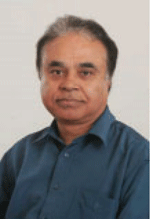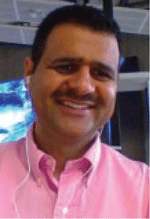Natural gas separation at CO2CRC’s Otway National Research Facility
Abdul Qader A B and Jai Kant Pandit AA CO2CRC Limited 11–15 Argyle Place South, Carlton, Victoria 3053 Australia.
B Corresponding author. Email: Abdul.qader@co2crc.com.au
The APPEA Journal 59(2) 803-806 https://doi.org/10.1071/AJ18178
Accepted: 26 February 2019 Published: 17 June 2019
Abstract
CO2CRC, in collaboration with the University of Melbourne and the University of New South Wales, is testing two novel CO2 capture technologies designed for both on-shore and off-shore natural gas applications in a state-of-the-art experimental capture rig at CO2CRC’s Otway National Research Facility. The goal is to develop robust and compact technology for high pressure natural gas separation over a range of adjusted high CO2 concentrations mimicking various gas field conditions. These technologies would facilitate developing new gas fields to recover methane in a cost-effective manner which is currently uneconomical with conventional technologies. In the first stage of testing, commercially available materials (adsorbents and membranes) were used for benchmarking. Results from both adsorbent and membrane technologies are encouraging with respect to recovery and purity of CO2 and methane with the prospect of commercial application.
Keywords: carbon capture, CAP membrane, high pressure high CO2 content natural gas separation, hollow fibre membrane, pressure swing adsorption (PSA).

Dr Abdul Qader is the Capture Program Manager with CO2CRC in Australia. Since 2007 he has been managing the implementation of CO2CRC carbon capture demonstration plants from A to Z, i.e. starting from conception within research laboratories, through to design for industrial settings, funding applications from external sources, construction, commissioning, operation to achieve respective research objectives and producing reports. So far, he has successfully completed projects involving nine pilot plants, most in Victoria’s power plants, two in Vales Point Power plant in NSW and one in gas separation in CO2CRC’s Otway Facility, Victoria. Also, he has been closely associated with the management of capture research conducted in six universities of Australia under the banner of the CO2CRC during 2007–2010. Besides various project technical and project management inputs, cost reduction of capture technologies for viable CCS with a view to reducing carbon emission is the focus of his engagement. Over and above this experience, he has over 39 years of experience in chemical engineering in various roles of research, design, teaching, consulting and managing projects. |

Dr Jai Kant obtained his PhD in Chemical Engineering from Monash University. He worked as a thermal power plant design engineer in Alstom Power and has been working in CO2CRC as a Capture Engineer for 3 years. He has wide and deep knowledge of major capture technologies: solvent, membrane and adsorption based technologies. He is also involved in various feasibility studies on capture and CCS retrofit. |
References
Qader, A. (2009). Demonstrating carbon capture. The Chemical Engineer pp. 30–31, November 2009.Qader, A., Webley, P. A., Stevens, G. W., Hooper, B., Harkin, T., Wiley, D. E., Kentish, S. E., Scholes, C. A., Smith, K., Mumford, K., and Chen, V. (2017). Learnings from CO2CRC capture pilot plant testing – assessing technology development. Energy Procedia 114, 5855–5868.
| Learnings from CO2CRC capture pilot plant testing – assessing technology development.Crossref | GoogleScholarGoogle Scholar |


